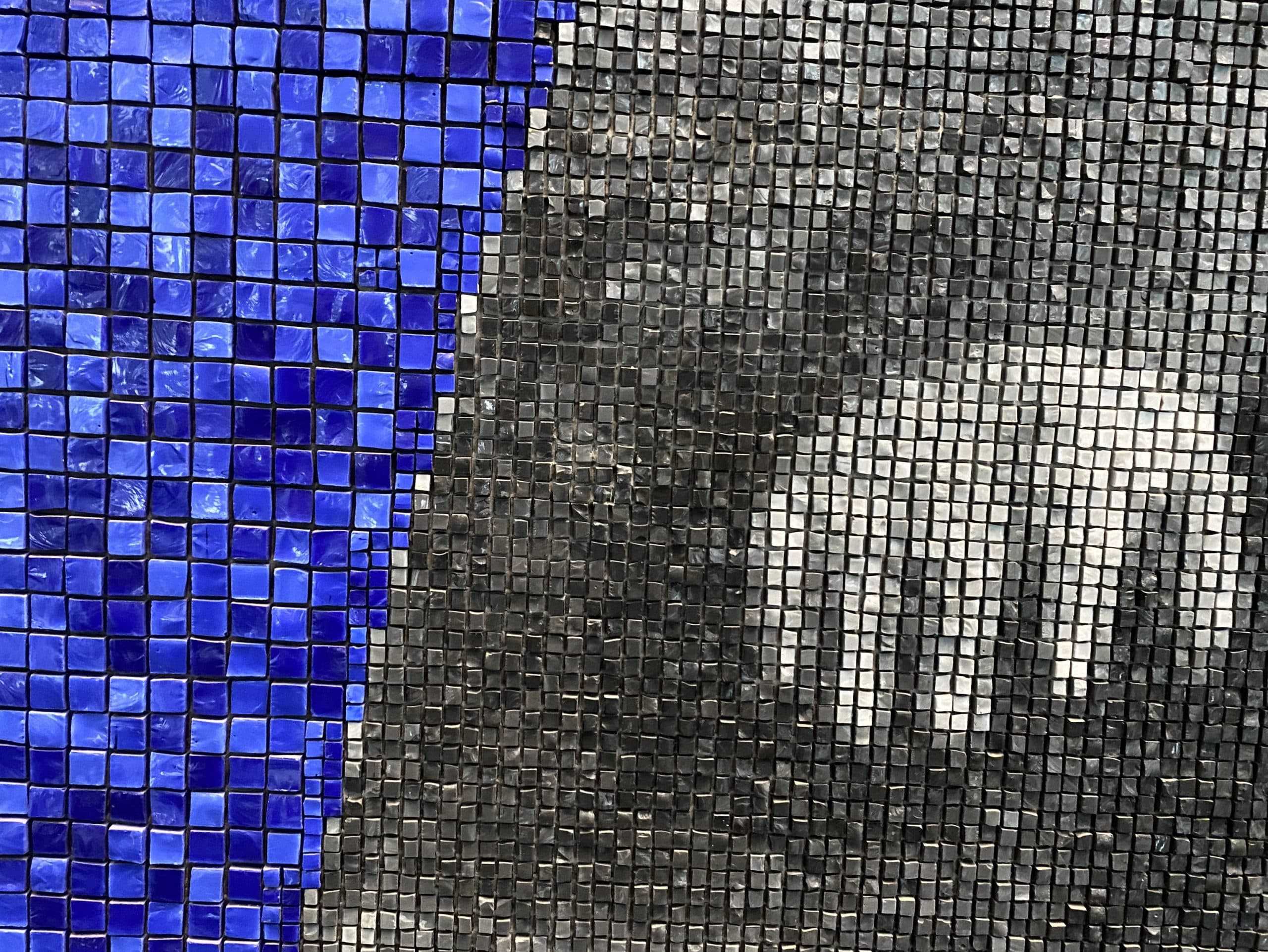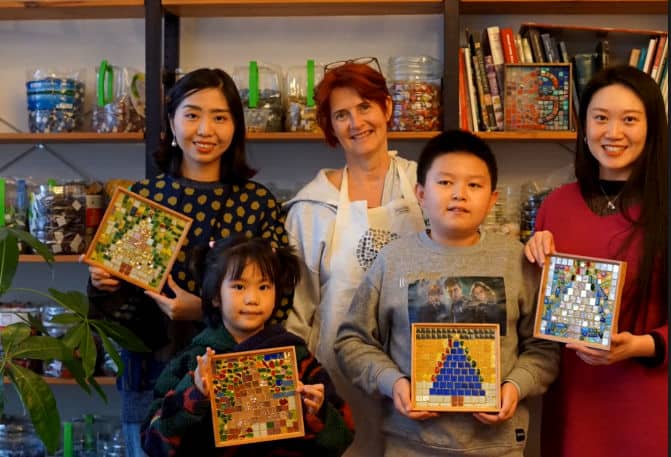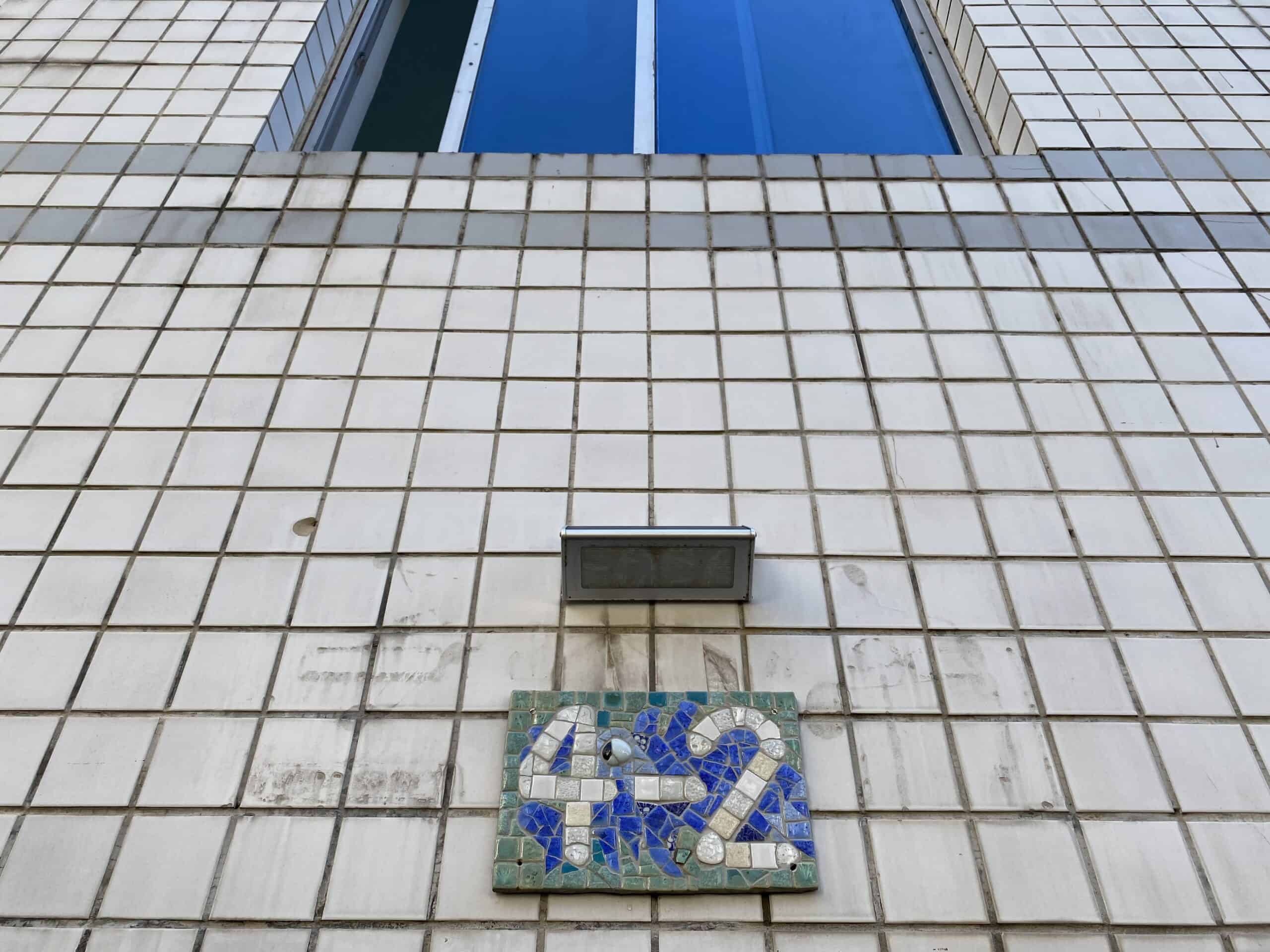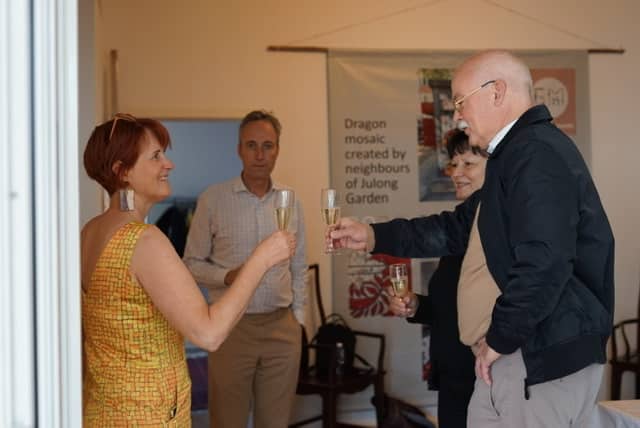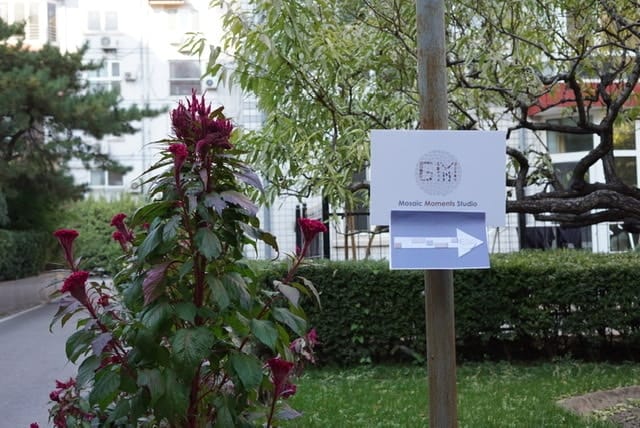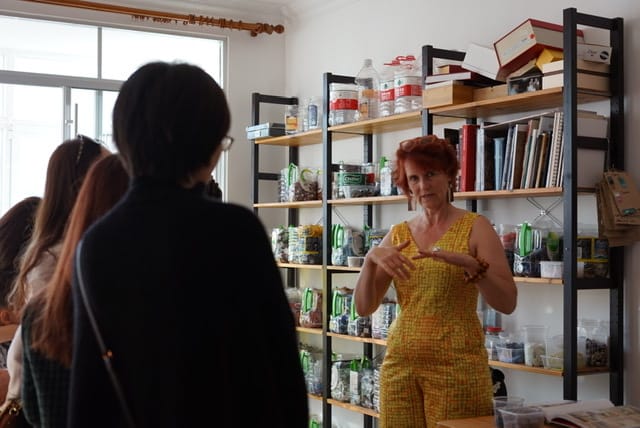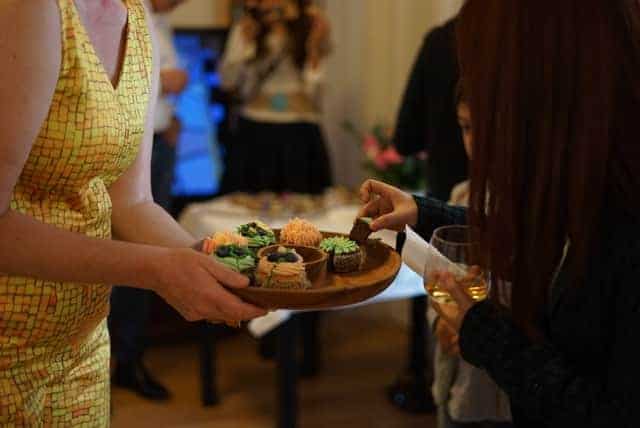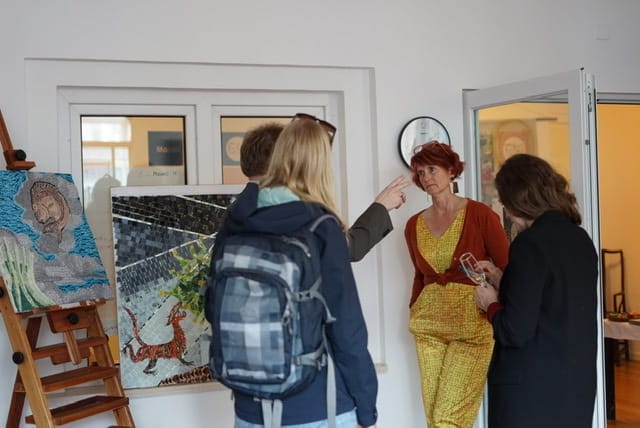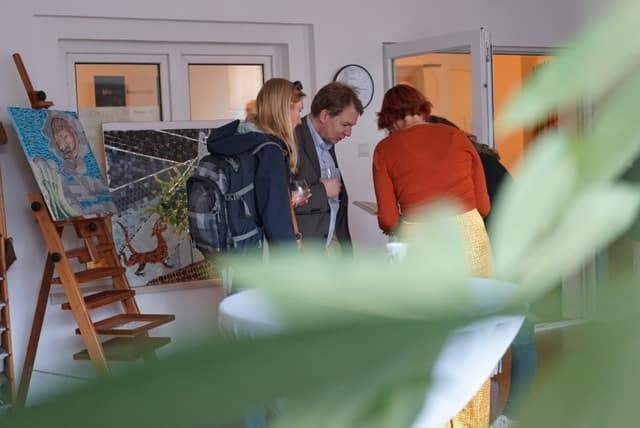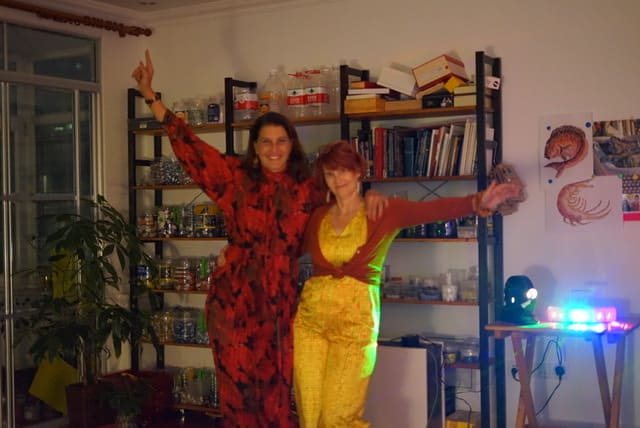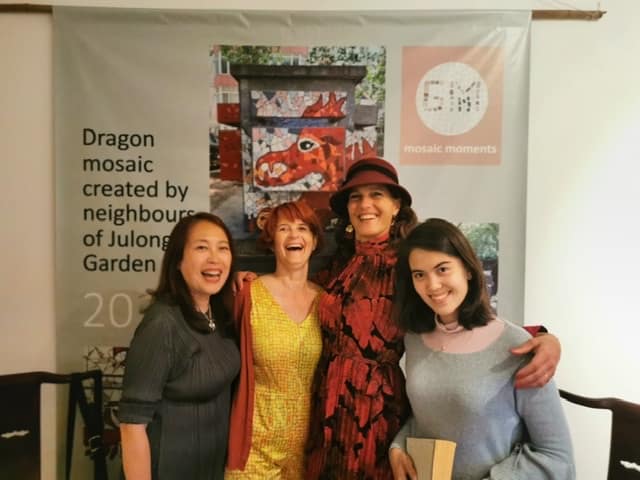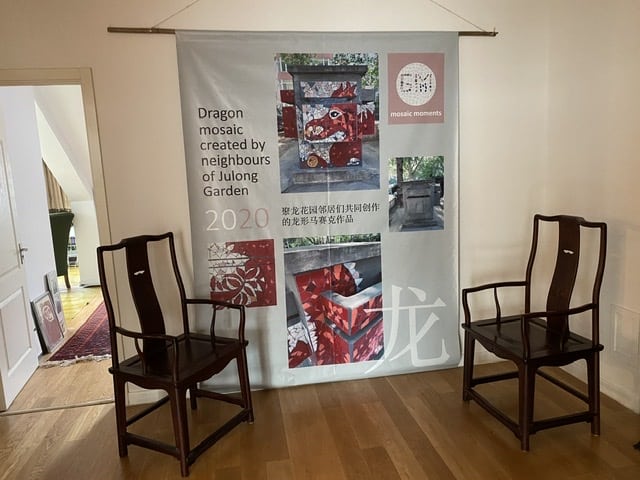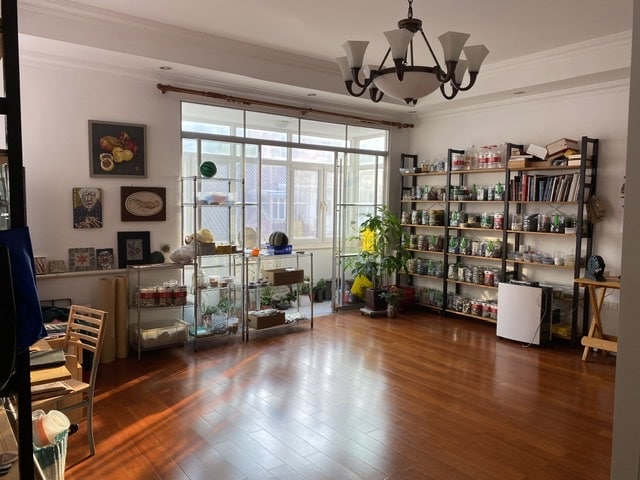In November 2020 I started to give regular workshops in the studio again. It is always a joy for me to see so many different mosaics being created in the space of the studio and to bring the faszination of mosaic craft to many people. As life of the average Beijinger is densely planned and mostly digital from shopping to paying to chatting the aim of the workshops is next to spend a couple of hours relaxed and unplugged in creating something beautiful with your own hands. The material we use – easy to break glass mosaic tiles in the most intriguing colors and shines – are a very suitable material for these workshops.
Latest Posts
Mosaic Moments Studio opened in Beijing
October 24, 2020 Mosaic Moments Studio, Beijing opened officially! About 30 visitors came to the open house and the party in the evening. A beautiful event that will stay in my memory for sure!
The “Frankfurter Treppe”
Today I visited my mosaic colleague Thomas Denker. I met Thomas at the joint meeting of the German and British Association of mosaic artists in York last October. Thomas is famous for his mosaics designs in which he uses the construction of pixels known in the photographic world.
We are currently working together on a project where he uses his self written software to produce a mosaicified version of a design of me.
Speaking over these and that in the world of mosaics Thomas mentioned the mosaic mural “ Frankfurter Treppe” inspired by Stephan Huber at the Foyer of the Maintower, at the Neue Mainzer Straße in the middle of the City of Frankfurt.
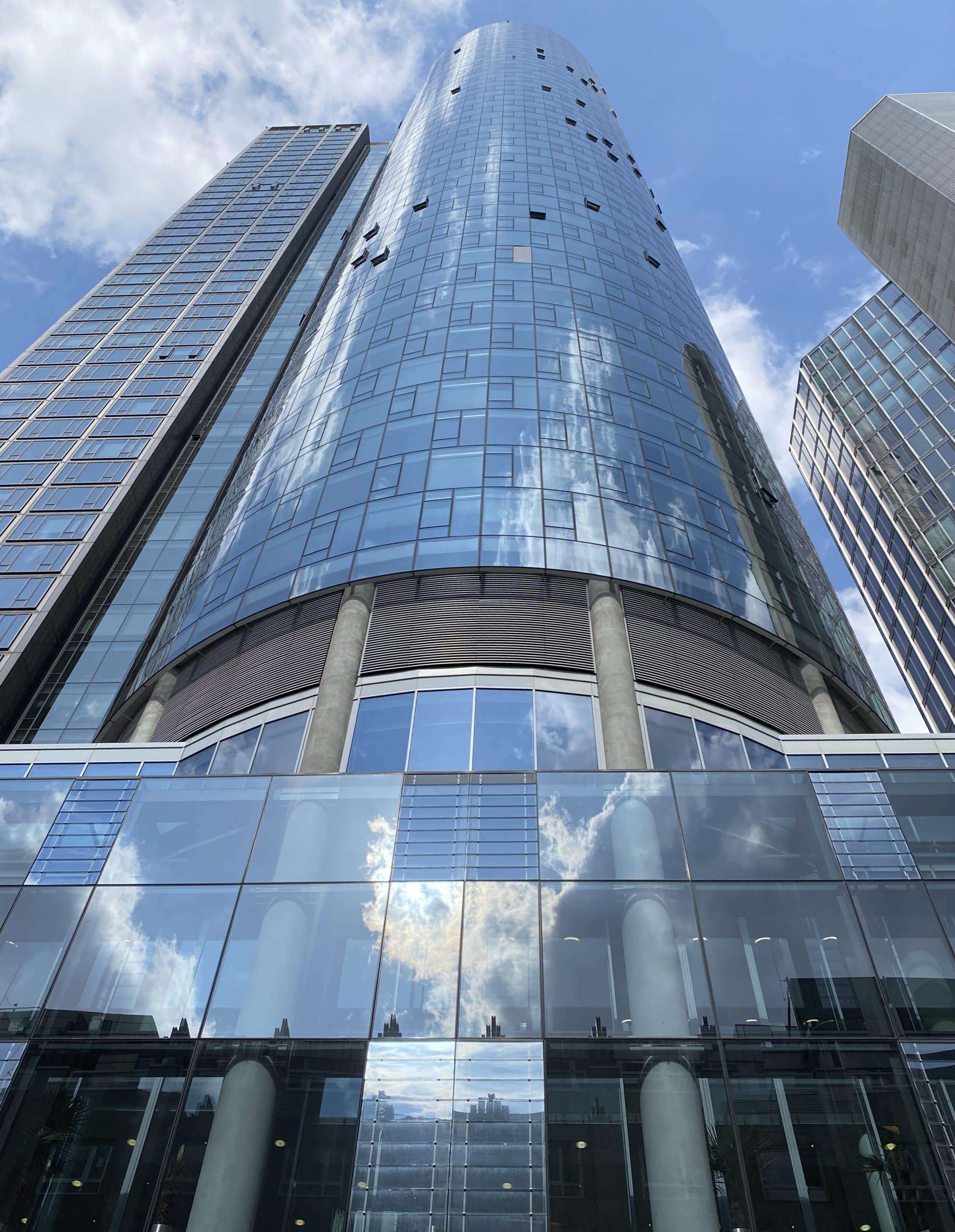
This afternoon I took the tram no 5 to go and visit this mosaic.
Walking along Neue Mainzer Straße connects Opernplatz with Willi – Brandt – Platz. It’s a typical city street which is darkend from the high rises. Already through the glass front the intense blue of the sides of the mural is visible. Going inside the visitor stands immediately in front of the gigantic mosaic.
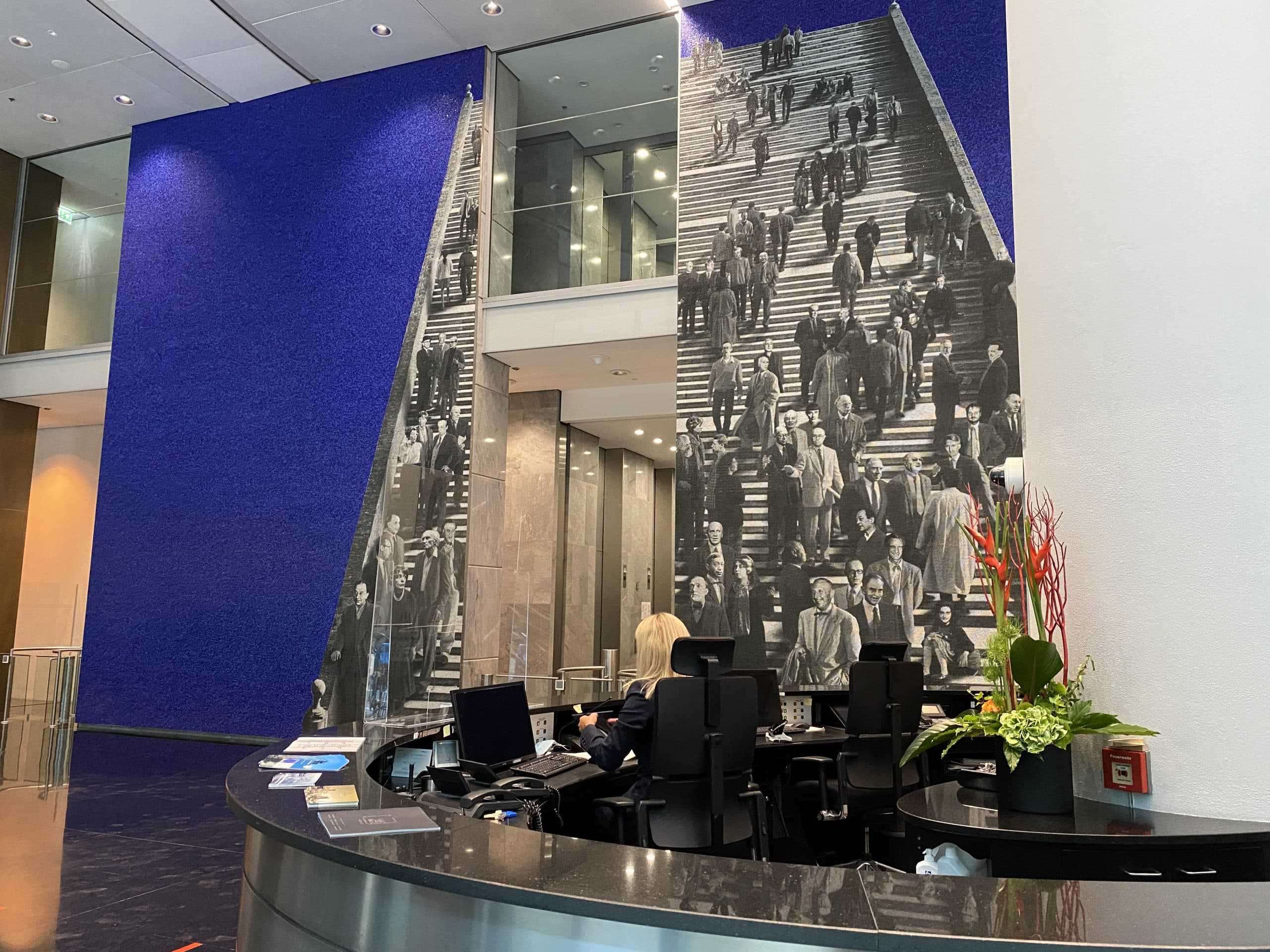
It depicts persons of importance in the history of the city meeting ordinary citizens on a wide stair symbolizing the public. The known people are not only of constructive importance for the city like the philosopher Theodor Adorno but also of conflicting importance like Magda Spiegel who was killed by the Nationalsozialisten.
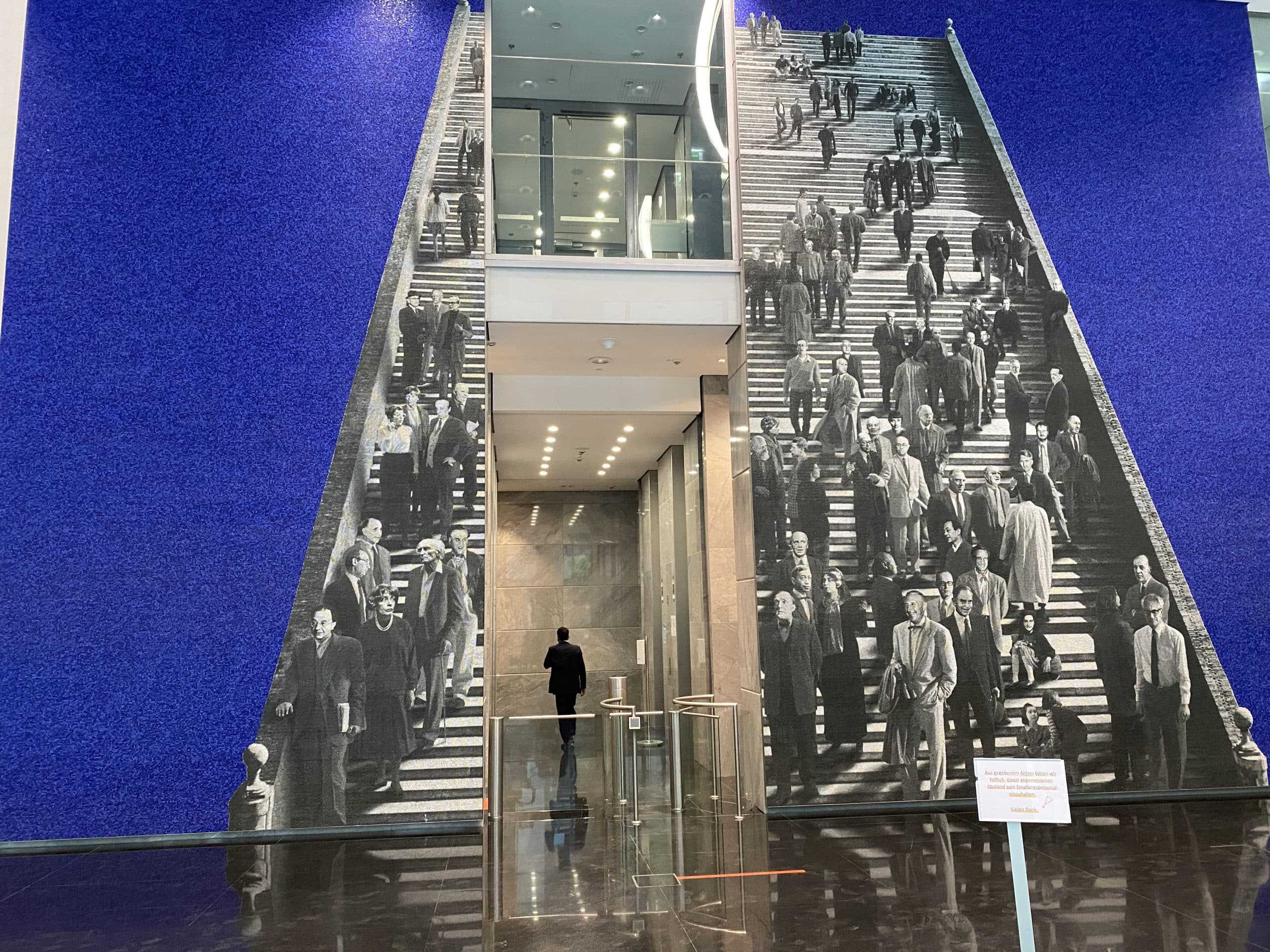
The mosaic is made of Smalti- Italian mosaic glass in 20 shades of grey and blue. Thomas told me that they counted 270 hours of work per square meter. The mosaic workshop of Mayer of Munich created the mosaic after a computerized design of e photo montage by Stephan Huber. An amazing work from the year 1999.
